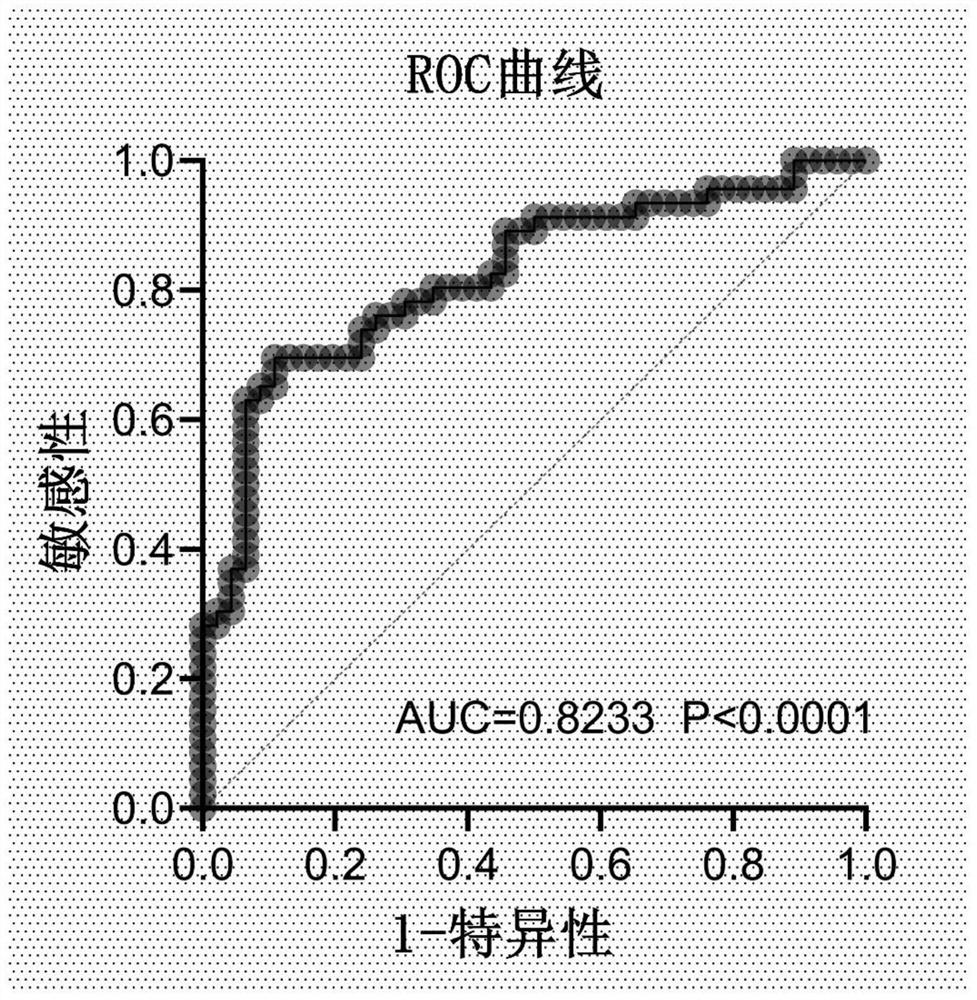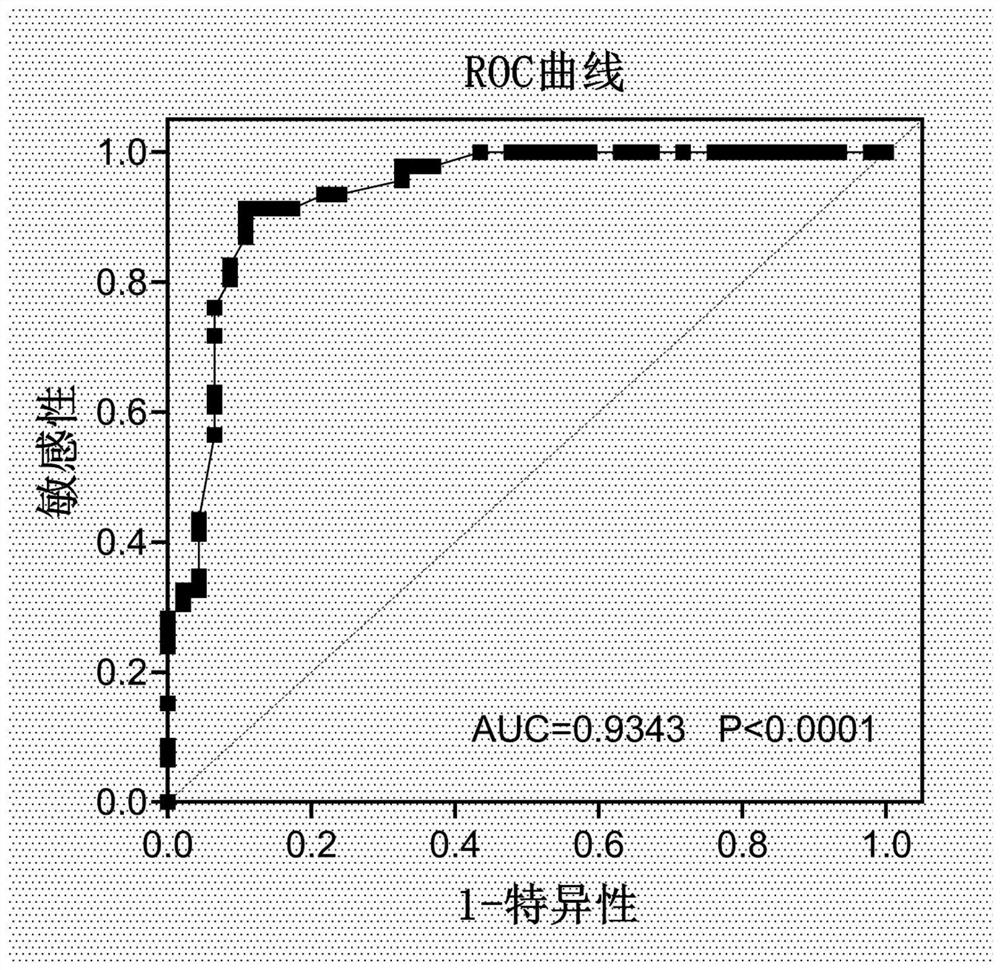Cross-scale integration evaluation pulmonary nodule malignant risk prediction system
A technology for risk prediction and pulmonary nodules, applied in the biological field, can solve problems such as difficulty in predicting malignant risk of pulmonary nodules, and achieve the effect of simple expression level
- Summary
- Abstract
- Description
- Claims
- Application Information
AI Technical Summary
Problems solved by technology
Method used
Image
Examples
Embodiment 1
[0029] Unless otherwise specified, the reagents and materials used in the following examples are all commercially available.
[0030] 1.1 Clinical sample collection:
[0031] The serum samples of 84 cases of malignant pulmonary nodules and 72 cases of benign pulmonary nodules in the control group were collected from Zhongda Hospital Affiliated to Southeast University from 2018 to 2020. All patients signed an informed consent to participate in the scientific research. Collect 5ml of non-anticoagulated peripheral blood, centrifuge at 3000rpm at 4°C for 10min, transfer the serum to 1.5ml EP tubes, and store at -80°C until use.
[0032] 1.2 Image feature collection:
[0033] Routine chest CT examinations were performed with one of the following multi-detector systems: Siemens Medicalsystems, Forchheim, Germany. The scanning parameters are as follows: 120kY, 100mAs, rotation speed 0.5s, collimation 16mm×0.75m, pitch 0.85.
[0034] The main information obtained includes: pulmona...
Embodiment 2
[0036] 2.1 Extraction of RNAs in microscopic serum exosomes:
[0037] Take peripheral blood from patients with malignant pulmonary nodules and patients with benign pulmonary nodules on an empty stomach in the morning, use non-anticoagulant tubes, centrifuge whole blood at 3000rpm at 4°C for 10min within 4h, collect serum and store in EP tubes without RNase, at -80°C Save for later. The supernatant was collected and centrifuged at 2000 g for 10 min at room temperature, 12000 g for 30 min, and filtered through a 0.22-μm filter to remove cell debris. Microscopic exosomes were purified by ultracentrifugation. Serum or cell supernatants were ultracentrifuged once at 100,000g for 70 minutes at 4°C to collect exosome-containing particles. All particles obtained were washed once with 11 ml of phosphate buffered saline and used for further experiments for each sample. According to the kit instructions, use 750 μl TRIzol LS kit (Invitrogen life technologies, USA) to extract total RNA...
Embodiment 3
[0058] 3.1 Establishment of lung cancer risk prediction model:
[0059] Taking the expression level of exosomal miRNAs of the normal control product as the standard, the expression level of exosomal miRNAs in the serum of patients with lung cancer is divided by this standard, so as to determine the expression ratio of the miRNAs profile of the patient relative to the normal person, and substitute the ratio into the following formula , to calculate the probability of malignant risk.
[0060] The model used univariate and multivariate logistic regression analysis to predict the incidence of early lung cancer step by step, and was tested by SPSS (version 22.0, SPSS Inc., IL, USA) and GraphPadPrism (version 8, CA, USA). In addition, through receiver operating characteristic curve (ROC), area under the curve (AUC) and classical matrix values [sensitivity (SEN), specificity (SPE), positive predictive value (PPV), negative predictive value (NPV) and Accuracy (ACC)] validates the e...
PUM
 Login to View More
Login to View More Abstract
Description
Claims
Application Information
 Login to View More
Login to View More - R&D
- Intellectual Property
- Life Sciences
- Materials
- Tech Scout
- Unparalleled Data Quality
- Higher Quality Content
- 60% Fewer Hallucinations
Browse by: Latest US Patents, China's latest patents, Technical Efficacy Thesaurus, Application Domain, Technology Topic, Popular Technical Reports.
© 2025 PatSnap. All rights reserved.Legal|Privacy policy|Modern Slavery Act Transparency Statement|Sitemap|About US| Contact US: help@patsnap.com



